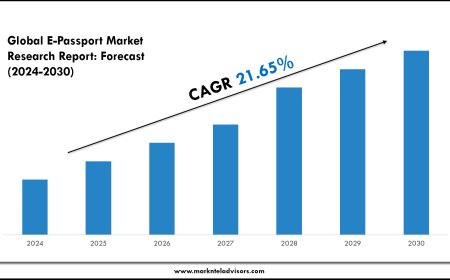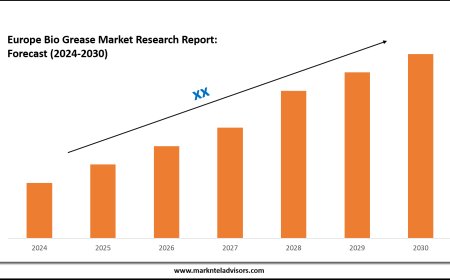Global Power Banks Market to Reach USD 31.12 Billion by 2034 | Surge in Mobile Device Usage and Technological Advancements Drive Demand
Global Power Banks Market to Reach USD 31.12 Billion by 2034 | Surge in Mobile Device Usage and Technological Advancements Drive Demand
Theglobalpower banks marketis on a consistent upward trajectory, fueled by rising smartphone adoption, increasing mobile dependency, and the ongoing expansion of wireless technologies. In 2023, the market was valued atUSD 14.34 billionand is projected to grow at acompound annual growth rate (CAGR) of 8.20%during the forecast period, reaching an estimated market value ofUSD 31.12 billion by 2034. As digital connectivity becomes indispensable, consumers across all geographies are investing in portable charging solutions that support their always-on lifestyles.
Power banksportable devices that store electrical energy for charging smartphones, tablets, wearables, and other USB-enabled electronicsare no longer perceived as accessories but as daily necessities. The rise inbattery-draining applications, remote working environments, andincreased screen timehas elevated the need for compact and reliable power storage. Furthermore, rapid advancements inbattery technology,charging speeds, andconnectivity standardssuch as USB-C and wireless charging are reshaping the competitive landscape and encouraging innovation.
Key market growth is being driven by several structural and consumer-centric trends. Firstly, the proliferation ofhigh-performance smartphones, power-hungry gaming devices, and larger-screen tablets has led to increased energy consumption, shortening device battery lives and prompting the need for backup charging sources. Secondly, the expansion oftravel and tourism, especially in emerging markets, has contributed to growing demand for portable energy. Additionally, the rise ine-learning platforms,mobile banking, andremote workparticularly post-pandemichas kept devices in constant use, further accelerating product uptake.
Another core driver is the evolution oflithium-ion and lithium-polymer batteries, which has significantly improved the energy density, charge cycles, and lifespan of power banks. Modern units now boast features such asfast charging,pass-through charging,solar integration, andmulti-device compatibility, aligning well with current consumer expectations. According to industry data published by Japan's METI and the U.S. Department of Energy, research funding inportable energy solutionsandlightweight battery designshas increased steadily since 2020, encouraging innovation in this field.
Explore The Complete Comprehensive Report Here:
https://www.polarismarketresearch.com/industry-analysis/power-banks-market
The marketssegmentation by battery type, capacity range, energy source, and distribution channelprovides a deeper understanding of evolving customer preferences. In terms ofbattery type,lithium-ion batteriesdominate due to their cost-efficiency, widespread availability, and higher energy density. However,lithium-polymer batteriesare gaining ground, particularly in slim-profile and high-end models, due to their flexible form factor and enhanced safety features.
Bycapacity, the market is segmented intobelow 5,000 mAh,5,00010,000 mAh,10,00120,000 mAh, andabove 20,000 mAh. While the 5,00010,000 mAh range remains the most popular for regular smartphone users, demand is rising rapidly forhigh-capacity power banksin the 10,00120,000 mAh and above 20,000 mAh categories. These larger units are preferred by gamers, digital nomads, and professionals who use multiple devices on the go.
Power banks powered bysolar energyare emerging as a niche yet promising segment. These eco-friendly products appeal to outdoor enthusiasts, travelers, and users in power-deficient regions. Though still limited in adoption due to slower charging speeds and higher cost, technological improvements inphotovoltaic efficiencyare expected to broaden their appeal in the coming decade.
In terms ofdistribution channels,online saleshave witnessed exponential growth, thanks to the ease of comparison shopping, availability of global brands, and aggressive discounts on e-commerce platforms. However,offline channelsespecially consumer electronics stores and mobile retail outletsremain strong in Asia-Pacific, Latin America, and parts of Africa, where consumers still prefer in-person evaluation and brand consultation before purchase.
From aregional standpoint,Asia-Pacificdominates the global power banks market, contributing the largest share both in volume and revenue terms. China and India are the primary demand drivers, supported by massive smartphone penetration, competitive pricing, and the presence of homegrown manufacturers. According to India's Ministry of Electronics and Information Technology, mobile phone users exceeded 1.2 billion in 2023, presenting a vast user base for portable charging solutions. Moreover, domestic brands and aggressive pricing have significantly lowered the entry barrier in these markets.
China, home to major players such as Xiaomi and Lenovo, also benefits from a robust local manufacturing ecosystem that allows for rapid product innovation and scalability. Rising urbanization, long commutes, and digital financial services are reinforcing the need for extended battery backup in Chinese metropolitan regions.
North Americafollows as a key market, primarily driven by consumer demand forpremium products,multi-functional power banks, andhigh-output devices. The U.S. market exhibits a strong preference for fast-charging, high-capacity units that are compatible with Apple and Android ecosystems. Increasing work-from-home and hybrid work trends have led to frequent use of laptops and tablets away from traditional charging points, thereby boosting the demand for laptop-compatible power banks.
Europepresents a more segmented market, with Western European countries such as Germany, France, and the UK showing consistent growth due to a growing culture ofsustainable travel,electronic mobility, andclean energy adoption. Consumer preference is shifting towardlightweight, stylish, and eco-conscious designs, which has encouraged the growth of niche premium brands. Moreover, EU directives on battery disposal and recycling are encouraging manufacturers to adoptsustainable materialsandmodular battery systems.
Latin Americaand theMiddle East & Africa (MEA)are expected to register steady growth over the next decade, albeit at a slower pace due to pricing sensitivity and limited product awareness in rural areas. That said, expanding mobile infrastructure, rising disposable income, and increasing reliance on mobile devices in countries like Brazil, Nigeria, and UAE are gradually increasing regional demand.
Thecompetitive landscapeof the power banks market is moderately consolidated, with a mix of global technology leaders and regional manufacturers. Companies compete on the basis ofcharging efficiency,design innovation,safety features, andprice differentiation. Strategic partnerships with e-commerce platforms, celebrity endorsements, and frequent product launches are common market penetration strategies.
Key companies operating in the global power banks market include:
-
Ambrane
-
Anker Technology
-
ASUSTeK Computer
-
Beijing Xiaomi Technology
-
Intex Technologies
-
Lenovo Group
-
Microsoft Corporation
-
Panasonic Corporation
-
Samsung SDI
-
Sony Corporation
XiaomiandAnkerare among the markets dominant players, known for offering a wide range of affordable and high-quality power banks with fast-charging capabilities.AmbraneandIntex Technologieshave built a solid presence in the Indian market, targeting budget-conscious consumers.SonyandPanasonicappeal to high-end users by focusing on durability, performance, and sleek aesthetics.Samsung SDIbenefits from vertical integration, leveraging its expertise in battery cells to offer reliable performance and long lifecycle products.Microsoft,ASUSTeK, andLenovoare focusing on power banks tailored to laptop users, integrating USB-C Power Delivery and high wattage output features.
Looking ahead, the next phase of power bank innovation is expected to revolve aroundsmart energy management,AI-based charging optimization,biodegradable materials, andIoT-enabled power control. Companies are also investing ingraphene batteries, which promise faster charging, longer lifespan, and lower heat emissionfeatures that can revolutionize the user experience.
Conclusion:
Theglobalpower banksmarketstands at the convergence ofconsumer technology trends,portable energy demand, andsustainability imperatives. With smartphones becoming lifelines and digital tools driving work, education, and entertainment, the reliance on mobile power solutions is stronger than ever. As innovation accelerates and customer expectations evolve, power banks will continue to adaptnot just as power backups, but as integral components of a connected, energy-aware lifestyle.
More Trending Latest Reports By Polaris Market Research:
US Healthcare/Hospital Food Services Market
Mobile Virtual Network Operator (MVNO)
Commercial Uav (Unmanned Aerial Vehicle) Market
































